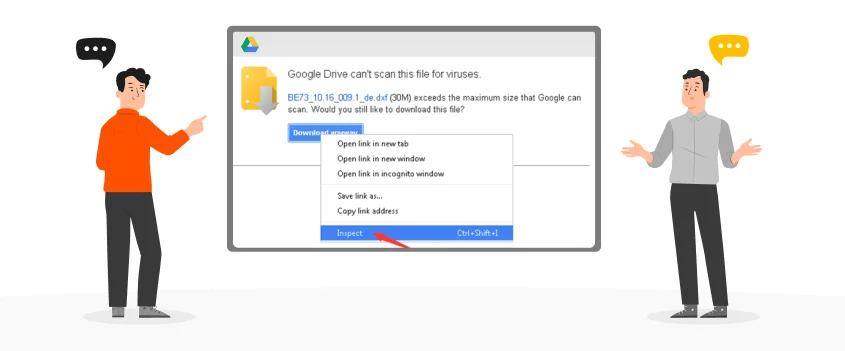2025 Offer Request a Quote Today and Grab a $50 Coupon for Free!
The world of today is a hub of commercial and economic activity. With the expansion in trade and commerce activity across borders, communication between countries has increased manifold. However, the one thing that binds all communities with each other is translation—the method that makes cross-communication possible. Here Real-time translation plays an important role.
With the advent of the internet and technology, translation has eased to a higher degree than in the days of yore when human translation was the only way content could be translated.
Today, Google Translate and Bing dominate the online translation landscape, comprising tools that translate in millions of global languages.
In the year 2016, Google Translate was able to translate more than 100 billion words per day and had a user base of over 500 million users. This figure continues to grow as more people turn towards it for translation.
Whether you are a student seeking to apply to an overseas university or an individual wanting to read the set of choices for a holiday abroad, translation is what you really need.
This is where real-time translation comes in. The ending point of online language translation, termed as Babel Fish, opened up avenues for real-time language translation to be converted into speech.
While there is no doubt that language translation has traveled a long way from the Yahoo! Babel Fish back in the year 1997 to this existing world where Artificial Intelligence is playing a significant part, it cannot be denied that real-time translation is important now more than ever—so much that even an internet user can perform a real-time translation himself.
Google itself has introduced goods such as wireless earphones and pixel buds consisting of a function of managing a real-time language translation.
This feature is capable of translating a conversation taking place between two individuals speaking different languages in real-time.
Additionally, Google recently announced that this real-time translation will now be accessible to all Google Assistant-optimized smartphones and headphones to make real-time translation easy for all.
(RTT) Real-time translation technology is what it sounds like. It is basically a tech-driven solution that directly translates content from one language to another language. Anyone is able to use RTT for getting a "gist" of translation—making quick fact checks and cobbling together communication with someone who talks in a different language.
The process of real-time translation has witnessed remarkable changes over the years. Where the previous versions of this efficient and mind-blowing technology were first used to change speech into text and then translate that text into a chosen language, this process has shown a shift entirely, thanks to AI technology.
Today, translation tools hear the words being spoken by examining the waveforms of the sound, classifying those portions of the speech that are linked with its translations. The tool then proceeds to translate the speech into what it finds common in the target language.
The system of real-time translation works on the principles of Artificial Intelligence and different kinds of machine learning, by using advanced pattern-matching software that is able to recognize sounds.
Neural networks and deep learning programs are used for correctly analyzing what is being said and being understood regarding the context of words and sentences.
All the information is then processed with the help of encoders. Other than that, the AI translation tool also has an access to a huge database containing common information, words, and meanings that have previously been taken from millions of other documents.
In recent times, the level of proficiency reached by real-time translation technology has reached such great heights that the estimated time for carrying out translation is nearly 2 to 5 seconds—an admirable feat to say the least.
However, owing to the translation machinery which relies on cloud-based data, a pause is present between translation and speech.
Since the majority of the translating systems work on cloud-based analysis, a small interval may be experienced between translation and utterance of speech. This is likely to change with the advancement in the network and better, faster AI tools.
Alexa, Cortana, Siri, and other software in smartphone devices have learned already to understand what a person is saying and apply commands in a single language. Today, they are learning to translate those words into other languages.
1: Google’s Pixel Bud earbuds work with Android devices which translate between up to 40 languages (Google also offers Google Translate and Word Lens, which translates words in photographs)
2: Waverley Lab’s pilot system consists of two earpieces shared between two people who don’t speak the same language. Similar devices, including Translate One2One, have also been announced
3: iTranslate and Bragi already proposed Dash Pro, which translates in over 40 languages
4: Apple’s Siri will soon translate between Mandarin Chinese, U.S. English, French, Italian, Spanish, and German.
Microsoft is merging real-time language translation inside most of its goods, involving Skype Meeting Broadcast, Skype for Business, live PowerPoint translation, etc. Additionally, Microsoft also provides developers with APIs for the short-term development of these tools.
According to recent statistics, the use of Skype Translator has boosted up to 400% in the first year of accessibility, with French to English emerging to be the most popular language combination.
Other than that, according to Microsoft, the use of deep learning technologies has improved its translating performance by at least 20%.
These upgrades are the main reason for the real-world improvements with respect to teamwork. Microsoft is planning to install its translation technologies in the Microsoft Teams environment in the coming future.
This will probably open doors to much more use of these tools in the company, as it has already been declared that 200,000 establishments use this facility.
With the growth of networking tools and machine learning, it has been predicted that most companies will adopt these real-time language translation technologies as they may assist them in opening new doors for generating fresh revenue channels.
However, in order to support the demand, connectivity needs to be robust enough to aid in the speeding up of the translation process.
Another aspect of translation, called voice translation, can be used for countless purposes. For instance, at the time of war with Iraq, the U.S army was found equipped with translating devices, teaching potential military use for such tools.
Public assistance facilities and emergency response, humanitarian relief organizations, and NGOs will definitely make use of these technologies in their work.
At present, Google Brain researchers are working on neural networks that will probably be able to translate languages without using written reference data. This may allow machines to translate little-known languages when required.
Although real-time language translation solutions may aid in breaking down language barriers, the task of developing understanding and trust requires a much more difficult set of behaviors and respect for traditional differences.
According to Google, the latest transcription feature will be on Android devices, but the corporation intends to bring it to iOS in the coming future. It must demonstrate it as its own “transcribe” option in the app after the user has modernized it.
Google states that a user will be able to restart or stop the transcription by beating the mic icon and can customize the dark theme options in the Translation settings menu while altering the font of the content.
This new function will start rolling out very soon and will be accessible to all users around the globe. The initial languages will be French, English, German, Russian, Hindi, Spanish, Thai, and Portuguese. This means that an individual will be able to pin his ears back to any one of those languages spoken audibly and translate it into any other language of his choice.
Here, a question might arise in peoples’ minds—why not use Google Translating voice options for translating a spoken phrase, word, or sentence from one language to another, involving both verbal as well as textual forms?
The answer to that lies in a statement by a Google spokesperson, declaring that a part of the application was found to be unsuitable for listening to a longer translated discussion at a classroom lecture or a video of a lecture, a story from a grandparent, a conference, etc.
This points out the need for real-time translation technology to translate these important conversations which will both be quick and efficient.
Translation has been the core objective of many companies in the past, with numerous of them turning to translation agencies for getting the job done. While the efficiency of these human translators cannot be denied, the future of translation lies in real-time translation technology.
As the world progresses towards more refined means of communication, this real-time translation will pave the way for a more unified, efficient, and professional translation system, one governed by technology and backed by previous translation works.
This is the reason why it is safe to say that companies should adopt real-time translation technology to speed up the translation process—as it is here to stay.

Immigration is the process where you can move to a certain country, of which you don’t have a nationality, in
Read more
When it comes to the world of the medical profession, accuracy is one of the most crucial aspects. Especially when
Read more
The testament is a form of document that the author has declared to be true. Not all forms of testaments
Read more
In the previous article, we have introduced how to get direct link from Google drive, but if the file that
Read more
When you use the online file conversion function of Mars Translation, you can directly upload the OneDrive files onto Mars
Read more
A transcript is not only a copy of a student’s permanent academic record but also a written record of the
Read more
You know that with the raising standards of life, people move where there is more scope and a bright future.
Read more
You are using Court documentation in daily matters. You need the help of court to resolve your matters in an
Read more
Now a day as you know that rights amendments are taken, so in order to make them authentic and legal
Read more

